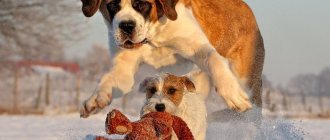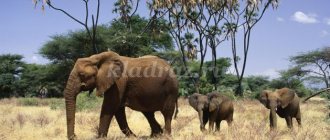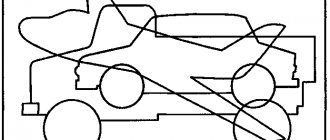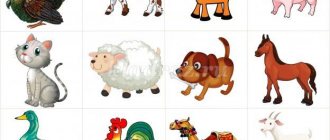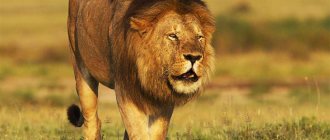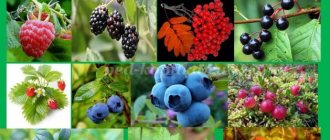ECD for familiarization with the outside world in the preparatory group “Animals of hot countries”
Razilova Elena Leonidovna
ECD for familiarization with the outside world in the preparatory group “Animals of hot countries”
The goal is to consolidate and expand children's knowledge about animals of hot countries .
— clarify and broaden children’s horizons about the life of animals in hot countries ;
-form ideas about the relationships between living organisms and their environment;
- continue to learn to express your own opinions;
- develop interest in representatives of wildlife ;
— expand the active conceptual vocabulary of students;
- cultivate interest in around us and the ability to talk about its objects with adults and peers, listen carefully and complement each other’s answers;
Crocodile
The walrus is fat and heavy. Like a huge leather bag of fat.
Two huge white fangs protrude from his bristly mustache. Instead of legs, the walrus has flippers. He uses them, like oars, to rake water.
It will dive deep under the water and graze on the bottom of the sea, like a cow in a meadow. He chews algae, looks for shells, and when he has eaten enough, he swims up, leans on the edge of the ice floe or on the shore with his fangs, pulls himself up and crawls out of the water. He lies down on the stones and rests.
Penguins
These are absolutely amazing birds, unlike any other. They fly in water, not through the air. They dive and flap their short wings so hard, they fly so fast under water that they catch up with the fish. And penguins also walk in a special way, in their own way: in columns. From a distance it seems that this man is walking in a black jacket and white vest.
One day a ship sailed into unknown cold lands. The sailors wanted to land on the shore and suddenly they saw: a whole army lined up on the ice! We swam closer. And the army suddenly, as if on command, plunged headfirst into the water! It was only then that the sailors realized that these were not people, but birds.
The whale is the biggest animal in the world. He lives in the sea, swims in the water like a fish.
A whale will swim into the cold seas, where there is only ice and snow, and it will also swim to the south, where it is hot all year round, chasing schools of fish. Where the fish go, there he goes.
A whale will capture a whole school of fish along with water in its mouth, release the water, and the fish in its mouth will remain stuck in the whalebone. Just don't think that this is really a mustache. There are these plates in the whale's mouth, like a lattice, and these lattice is called whalebone.
A branch in the forest did not crunch, a leaf did not move, a huge wild elephant silently emerged from the dense thickets of the jungle.
The elephant stands like a towering gray mountain: legs like logs, ears like two sails, long tusks, crooked and strong. The elephant stretched out its trunk, tore a bush out of the ground, put it whole in its mouth and began to chew.
Such a strong man is not afraid of anyone, no one is afraid of him.
Rhinoceros
The branches in the forest crack, the trees sway and shake. This is a huge rhinoceros beast bursting straight through the tropical thicket. He doesn’t care about thorns and thorns, hard branches and stumps. His skin is thick and strong, like armor: a spear will bounce off it, an arrow will break. Only a rifle bullet can pierce such skin.
The rhinoceros has a large horn on its nose, and its eyes are small and blind. He can't see well with them. He doesn’t really understand anything, but immediately rushes to butt heads.
Source
Reindeer
In the North there is snow and ice, and the summer is short and short. You can’t make hay there, you can’t feed a cow or a horse in winter. Only reindeer can live there. He shovels the snow with his hooves and takes out moss lichen.
Whose milk do people drink in the North? Deer. What does he drive? On a deer.
Whose meat does he eat? Deer.
A person cannot live without deer in those places.
Animals living in hot countries
The fauna of the hot regions of the world is diverse, and the animals there are beautiful, although the shapes and sizes of some do not seem the most attractive.
Different types of monkeys
Orangutans, chimpanzees, gorillas and other representatives of monkeys are a large group in which there are small individuals and huge, dangerous predatory animals with fangs several centimeters long. In their habits, behavior and some other aspects, these animals are very similar to people, and therefore often become objects of adoration.
Most monkeys have a long tail, which helps them climb trees. They also have long arms and legs with 5 fingers, with which they can cling to vines and branches and pick fruits.
Primates are an extremely smart species, distinguished by the ability to hide, wait, live in a pack, deftly get rid of predators and get food. The body of most monkeys is covered with hair, but without underfur, and there is no hair on part of the face.
The classic color is brown, brown, gray or black, as well as red, but more exotic species are also found. Mandrills, for example, have red and blue colored faces.
Lion is the king of the animals
A large wild cat that can break the back of a bull, antelope or other herbivore with one blow. Lions have the loudest roar; if you are close to them, you can easily go deaf for several minutes. Due to this, the cat received the proud title of King of Beasts.
Lions live in packs called prides. In one group there is usually one male and several females, but there are prides in which 2-3 males dominate. Males have huge, beautiful manes, while females do not have them. The male has a tassel at the tip of his tail. The leaders of the pack, as a rule, do not go out hunting, leaving this right to the lionesses.
Elephants
The seemingly calm, intelligent and obedient animals are among the largest of those that live on land. The elephant is one of the few herbivores that can resist lions and tigers. The huge trunk serves as a hand for the elephant; it uses it to communicate, drink water, and collect fruits and twigs from trees. Elephants have very thick skin that protects them from predators and the scorching sun.
Kangaroo
These animals live only in Australia and belong to the infraclass marsupials. Kangaroos grow taller than humans, but are born very tiny, after which they immediately move into their mother’s pouch and live there for several months. As soon as the cub turns one year old, it will leave the pouch.
Kangaroos have a very powerful tail and hind legs, allowing them to develop enormous speed and jump at distances of 7-10 m, or even more. These animals belong to the group of herbivores and feed mainly at night.
In Australia, the kangaroo population is protected, as at one time they were actively exterminated for meat.
Camels
Tall herbivores with 1 or 2 humps. They easily tolerate the drought of the hottest places on the planet, the Sahara and other deserts. They are distinguished by colossal endurance. They can easily survive several weeks without food and slightly less time without water.
Almost complete omnivory helps them survive: lichens, dry grass, and cactus spines. A camel eats any food. And when danger appears, this animal is capable of unpleasantly spitting.
Zebras
Graceful representatives of the African continent have a short, protruding mane and a tail, like a donkey’s, with a small tassel. They are distinguished by their original striped colors. Moreover, the stripes are very clear. Adult zebras feed on tree bark, grass, and young twigs. Often groups of zebras graze together with giraffes, antelopes and even ostriches.
Polar bear
The polar bear is a wandering animal. This tramp's fur coat is warm; the frost does not touch it. Thick fur does not get wet in water. He doesn’t care about frost, blizzard, wind, or icy water.
A polar bear walks and wanders on the ice and snow; he will catch his prey, a fish or a walrus, eat his fill and immediately fall asleep, right there on the ice.
And when he gets enough sleep, he wanders off again. He looks out, sniffs out someone to catch, something to fill his belly with again. He dives deftly, runs quickly, and swims easily. Such a person will not remain hungry for long; he will get food for himself.
